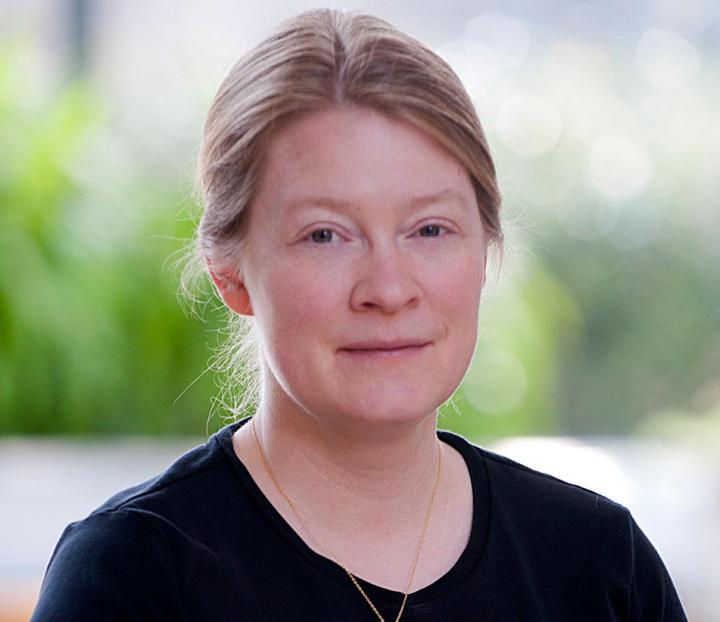Marcy Stutzman has been named a fellow of the American Vacuum Society

Credit: DOE’s Jefferson Lab
Some of the most advanced work to enable research at the U.S. Department of Energy’s Thomas Jefferson National Accelerator Facility is focused on ensuring that nothing gets in the way of the electron beam produced for nuclear physics experiments. Now, one Jefferson Lab staff scientist is being honored for her work on producing ultra-high to extreme-high vacuum environments to do just that.
Marcy Stutzman, a longtime staff member of Jefferson Lab’s Center for Injectors and Sources, has been named a Fellow of the American Vacuum Society for her “pioneering work in XHV chamber processing, coatings and measurements, enabling repeatable performance near 10-12 Torr and below along with leadership to AVS technology outreach and education.”
“I am honored to be chosen as an American Vacuum Society Fellow. AVS has connected me with a great community of scientists working on many research areas, including vacuum science and technology, and I am grateful to be recognized in this way by my colleagues,” she said.
Stutzman’s work contributes to the smooth and efficient operation of Jefferson Lab’s primary particle accelerator, the Continuous Electron Beam Accelerator Facility, a DOE User Facility. CEBAF accelerates electrons for use in nuclear physics experiments. Stutzman ensures that the machinery that produces the beam of electrons for CEBAF to accelerate is built to world-leading standards and is maintained in tip-top shape, that these electrons are generated in an ultra-high to extreme-high vacuum and thus contamination-free environment, and that they are imbued with desirable properties.
“To achieve good operational lifetime for the CEBAF polarized electron source, our vacuum has to be at or near the best that has been achieved in the world. All aspects of the vacuum system are at the edge of what technology can support,” Stutzman explained. “I’ve worked within the polarized source group for 19 years now to optimize the pumps and the materials, fabrication and assembly techniques that are needed to reach pressures at or near 1×10-12 Torr.”
Stutzman has also shared her expertise with her colleagues in the AVS and has served in many leadership roles in the organization since 2002. She has served on the committee for the Mid-Atlantic Chapter of the society and has served on the Vacuum Technology Division committee as chair, program chair, treasurer and secretary. She has also worked as chair of the History committee and as the representative to the American Institute of Physics’ member society History Liaison Committee.
“The AVS has offered great opportunities for me to interact with others working on cutting edge vacuum research. I have learned many things from my AVS colleagues, and hope that they’ve found the work I’ve presented to be helpful as well,” she said.
Stutzman is only the second Jefferson Lab staff member to be named an AVS Fellow. The only other is Fred Dylla, former Jefferson Lab chief technology officer and associate director of the Free-Electron Laser, who was bestowed the distinction in 1998.
###
Jefferson Science Associates, LLC, a joint venture of the Southeastern Universities Research Association, Inc. and PAE, manages and operates the Thomas Jefferson National Accelerator Facility, or Jefferson Lab, for the U.S. Department of Energy’s Office of Science.
DOE’s Office of Science is the single largest supporter of basic research in the physical sciences in the United States and is working to address some of the most pressing challenges of our time. For more information, visit https:/
Media Contact
Kandice Carter
[email protected]
Original Source
https:/




